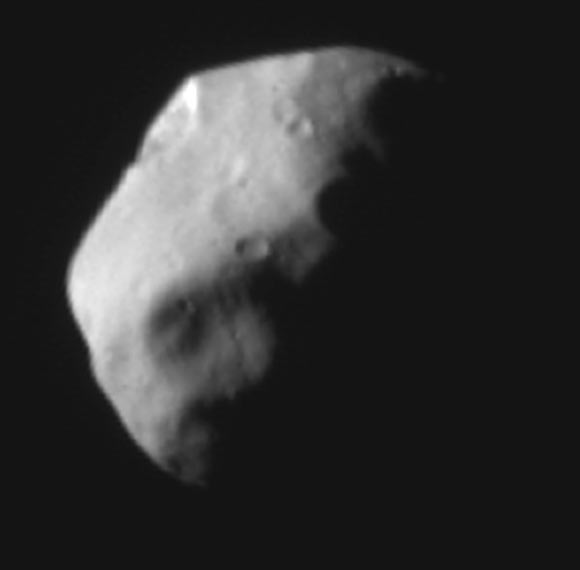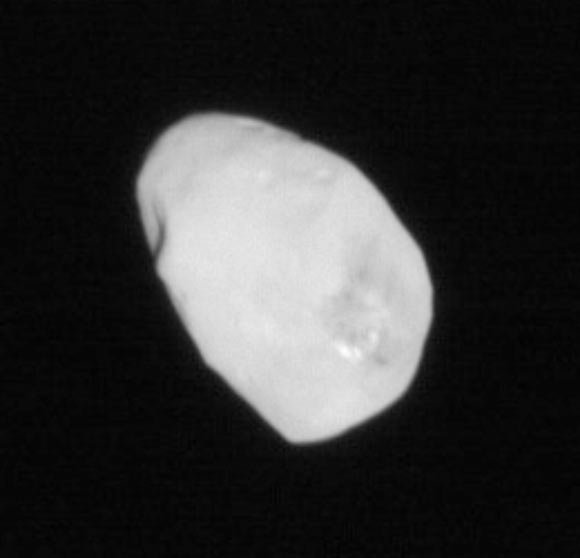NASA’s New Horizons spacecraft has beamed back the highest definition images of Nix yet.

This panchromatic image of Pluto’s small moon Nix was taken on July 14, from a distance of 14,000 miles. The illuminated surface is about 12 x 29 miles (19 x 47 km). Image credit: NASA / Johns Hopkins University Applied Physics Laboratory / Southwest Research Institute.
These new images of Nix – the third-largest moon of the dwarf planet Pluto – give the New Horizons science team a high resolution window into the satellite’s geology.
“We’re much less than halfway through transmitting data about the Pluto system to Earth, but a wide variety of new scientific results are already emerging,” said New Horizons principal investigator Dr Alan Stern, of the Southwest Research Institute.
The first image was acquired by New Horizons’ Multispectral Visible Imaging Camera (MVIC) instrument on July 14, 2015, from a distance of 14,000 miles (23,000 km).
“The unique perspective of this image provides new details about Nix’s geologic history and impact record,” New Horizons team members said.
The second image was taken by the Long Range Reconnaissance Imager (LORRI) aboard New Horizons on July 14, from a distance of about 62,000 miles (100,000 km).

This image of Nix was taken by New Horizons’ Long Range Reconnaissance Imager (LORRI) instrument on July 14, 2015, about two hours after the probe’s closest approach to Pluto. Image credit: NASA / Johns Hopkins University Applied Physics Laboratory / Southwest Research Institute.
New Horizons is currently 3.27 billion miles (5.26 billion km) from Earth and 116.2 million miles (187 million km) beyond Pluto.
The spacecraft is on course for a close flyby of the Kuiper Belt object 2014 MU69 in 2019.







